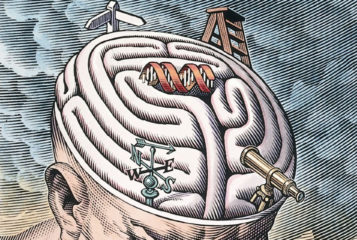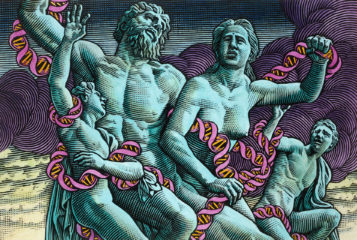The COVID-19 pandemic affected most, if not all, of the world's population, either directly or indirectly. The years 2020 and 2021 will always be remembered as the years the pandemic began, raged, and the world grappled with lockdowns and their intermittent relaxations. They will also be remembered for the development and eventual distribution of the COVID-19 vaccines; the first mRNA vaccines.
So, I was curious to find out how the Science Museum's curators of its Injecting Hope: The race for a COVID-19 vaccine exhibition would handle the topic. Would this be a high-brow exhibit that only virologists would understand, or would it contain basic information from news coverage suitable for children that most adults would have been familiar with? I was pleasantly surprised that it appeared ideal for children and academics, explaining complex ideas such as spike proteins and antibodies engagingly using games and many display items that could be touched and prodded. Perhaps the benefits of a greater understanding of COVID-19 by today's children may lie in emphasising the importance of vaccines and preparing for future pandemics despite current UK guidelines preventing the vaccination of children under the age of 12 against COVID-19.
The choice and presentation of the exhibits and the language used to describe them struck me as similar to evidence presented in a court case. Fake news, misinformation, and an overall scepticism of science and scientists have grown exponentially with the arrival of the COVID-19 pandemic, mainly focused on the COVID-19 vaccines (see BioNews 1104). However, it felt as if the Science Museum created this exhibition as a defence of science and its massive importance to the survival and prosperity of human civilisation. In short, science was on trial, and this was the case for its defence.
The exhibition is arranged chronologically, and at its start, the discovery and spread of COVID-19, the mysterious new disease, chronicled in news footage from around the world is shown, as well as detailing the many changes to society's daily lives in the form of daily press conferences, as well as family zoom calls and Joe Wicks' PE lessons.
We are then acquainted with what a virus is and how it infects human cells using its spike protein. The next part of the exhibit describes the discovery of the COVID-19 genome, and a lit figure of the genome beautifully illustrates its 30,000 DNA bases. The description of this figurine highlighted the importance of identifying the section corresponding to the virus' spike proteins to develop the subsequent mRNA vaccines.
In the next section, the importance and history of vaccines are laid bare regarding the previous epidemics featuring Ebola, Zika and SARS, diseases that were not necessarily in the minds of the British public as they did not arrive on these shores. This may have been why so many underestimated the importance of vaccines and scientific research during a pandemic. After reading about B and T cells' roles in the immune system, this exhibit then explains the four types of COVID-19 vaccines and how each one functions.
As one moves on to the section describing the COVID-19 vaccine trials, we are explained in no uncertain terms how these trials were carried out as equally thoroughly as those performed for any previous vaccine. There are detailed explanations of how scientists overlapped multiple trial stages and why manufacturers began mass production of vaccines during the trial to be ready to distribute them as soon as possible following their approval. There is also a film of those who volunteered for the trials, revealing what motivated them to do so and any emotions they were experiencing when receiving the vaccines.
The exhibition then details the vaccine rollout and how epidemiologists ran computer simulations to identify the groups later prioritised in the UK based on a person's health conditions and age.
I really enjoyed discovering the surprising facts about groups underrepresented in scientific literature, including the role of female scientists I hadn't heard of before, such as June Almeida who discovered coronaviruses in the 1960s and the fact that variolation, the practice of infecting people with low doses of smallpox to induce a mild form of the disease, which would prevent the person from being re-infected, was actually first discovered and practised in India and Africa before it was in Europe.
There was a wide range of items on display, such as the equipment used in the study of COVID-19 as well as the development, manufacture and administration of the individual vaccines. However, the exhibition also featured the personal effects of many scientists, healthcare workers and volunteers, humanising these people. It was a reminder that they, too, were suffering the effects of the same pandemic and worked tirelessly, often without any acknowledgement.
The exhibition ends with a reflection on the pandemic and the future of COVID-19, as well as a word of caution not to abandon or forget the spirit of scientific collaboration and the advances made during the pandemic.
Despite my high praise, I do feel that the exhibition missed an opportunity to discuss the importance of understanding the origins of COVID-19. This open honesty may give rise to more conspiracy theories and blaming, but it could also reassure the general public that lessons are being learned and that the scientific community appreciates the value of knowing the origin of this disease.
Overall, this exhibit was thoroughly enjoyable, and I came away from it with a renewed appreciation for the work undertaken by those involved in developing, distributing and administering the COVID-19 vaccines, along with a more well-rounded knowledge of viruses and vaccines. I thoroughly recommend visiting this exhibit if you want to renew your faith in science.







Leave a Reply
You must be logged in to post a comment.